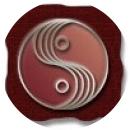
Questions for Support Meeting Post Grad September. 2019:
Class of 2018 (grad April 2019)

Pam's Qs for Oct. 4/19 Meeting #28
1) QL side lying : review arch then hip hike, release hip hike and then low back from arch?? Does this sound about right?
Also wondering in my notes when we learned Lower Extremities, I wrote, “if they can’t pull up with QL or low back, do obliques” - not sure why I wrote that?
Erector spinae group, QL, and obliques aid in lateral flexion; whereas, QL tilts the pelvis laterally (that's what I see in Trail Guide).
It seems like the QL tilts the pelvis laterally and the other muscles help out with lateral flexion of spine to same side - I want to hear about this more & I also realize that no "one" muscles works by itself :)

Pam Question for Oct. 4th Meeting #28
2) Can we review Back Lift?
I am curious about after teaching all the smaller MWB steps with lift elbow Upper Traps, Rhomboids, Lower Traps, head lift, elbow/head/hand lift & opposite leg extension; when they're doing the full expression of the movement (both upper and lower body), are they evoking each of the Upper Traps, Rhomboids & Lower Traps in a way and do they have to be precise or is this more of a "we did all the small pandiculations and MWB" and now when they put it all together, everything is working well together and should be releasing as well.
Hopefully that makes sense.
Thanks very much.
Pam

Sneaky SMA
I have a client who's hands and fingers are often very active during AP. I've come to realize it is like an unconscious 'cheat' and when I have her focus on keeping her hands totally relaxed we get way more movement and release. Can we review why SMA wants to reassert itself. Why is the brain so relcutant to give up these patterns? Why would it sneak the fingers in to do the dirty work? :)

pelvis forward posture
See this posture a lot (and I catch myself in it sometimes too). Is it always surfing off red? or can it be green. It feels like the sacral area is being compressed ie like the back is pushing forward. I'm just curious what leads to this posture. I'm doing a course on the pelvic floor and it mentioned that this posture can really compress the pelvic floor.

bone pain or muscle pain
A student asked me yesterday how to tell the difference between bone pain and muscle pain. Any thoughts?

Dermatome map
I hope that this is a quick question because I can see that there’s so many posted. I am fascinated by the dermatome map and I’ve been showing students and clients the map just so that they understand that if the centre isn’t free that there is a ripple effect on other parts of the body. It really opens up their eyes and their perception of them selves grows which I think is really valuable. So if The lumbar is itight Or has a braced or leveraged from... their hips legs or feet would be impacted. I get that but can the pposite be true— if they stub their toe Or sprain an ankle could the impact of their periphery affect the centre reflexively as well?
